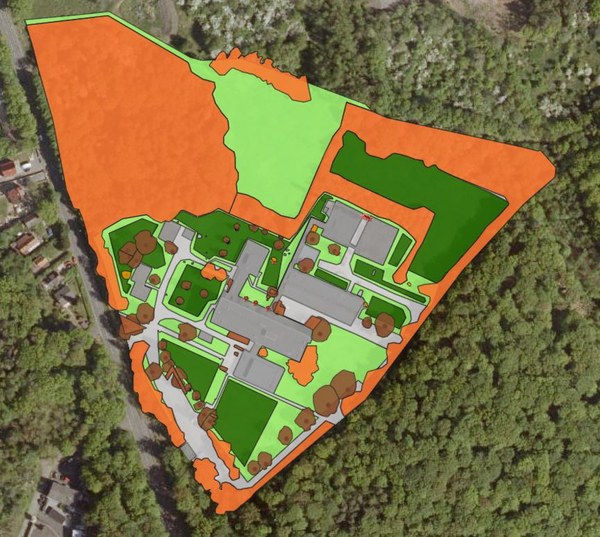GreenJLU
- Concept for the sustainable development of the green spaces of the Justus Liebig University Gießen
-
Concept for the sustainable development of the green spaces of the Justus Liebig University Gießen
Project Coordinator: Prof. Till KleinebeckerParticipating scientists: Prof. Dr. Jan Siemens, Prof. Dr. Lutz Breuer, Dr. André Große-Stoltenberg, Dr. Frank Jauker, Prof. Dr. Lea Schneider
Researchers: Mojdeh Safaei
Duration: 2021-2025
Funding: Hessisches Ministerium für Wissenschaft und Kunst, Innovations- und Strukturentwicklungsbudget
Main Project: JLU green spaces

Explore first results interactively:
How green is the Innenstadt campus? What percentage of the area of the Kultur- und Geisteswissenschaften campus is sealed off by buildings and roads? How many trees can be found on the naturwissenschaftlichen campus? What are the most common tree and shrub species on the JLU properties? You can find answers to all these questions in the following links.GreenJLU - Part 1: How green is the JLU?
GreenJLU - Part 2: How diverse is the woody flora of the JLU?
Citation of the story maps: Safaei, M., Kleinebecker, T., Bobric, S., & Große-Stoltenberg, A. (2023). Story maps of GreenJLU; Concept for a sustainable development of the green spaces of the Justus Liebig University Gießen. Zenodo. https://doi.org/10.5281/zenodo.7732763, https://arcg.is/0iP9H4, and https://arcg.is/10rP48Join and follow our citizen science project and help document Justus Liebig University's biodiversity
GreenJLU (Justus-Liebig-Universität Gießen) · iNaturalist
SummaryIn Germany, the proportion of people living in cities is more than 75% and constantly increasing. Urban green spaces, which are green islands surrounded by buildings and infrastructure areas, potentially fulfill a large number of important functions. They are mostly used for recreation purposes and have been proven to have positive effects on human health and psyche. However, urban green spaces also make important contributions to urban climate, carbon storage, water retention and can also take over important ecological functions as habitats for plants and animals. JLU is one of the most important landowners in the Giessen. These areas contain a large number of unsealed green spaces of various sizes. In the context of the development of a sustainability strategy, the need but also the great potential to develop the JLU-owned green spaces more sustainably was recognized. However, there is a lack of an overall concept to align green space management with sustainability aspects and to systematically implement measures to improve green space functions. The project is intended to initiate the transformation to a more sustainable green space design and management. The project addresses a large number of sustainable target functions: (a) increasing biodiversity, (b) increasing carbon storage and (c) water storage capacity, (d) improving the urban climate, (e) increasing the recreational function for JLU members and the city population and (f) the increased integration of sustainability aspects in teaching and research. With project progress, measures for the sustainable development of the JLU green spaces will be implemented and their impact on the above mentioned target functions will be evaluated.
 classification map of Strahlenzentrum
classification map of Strahlenzentrum
